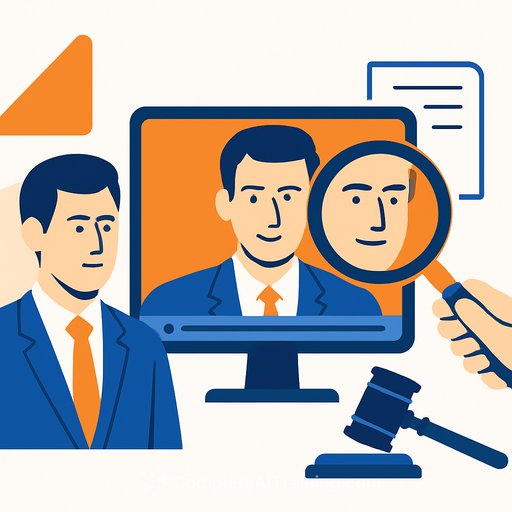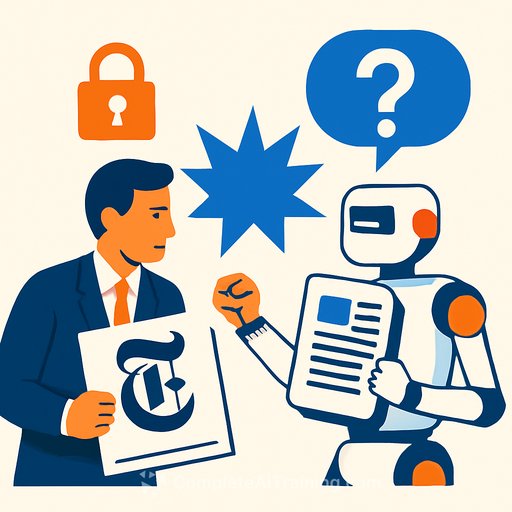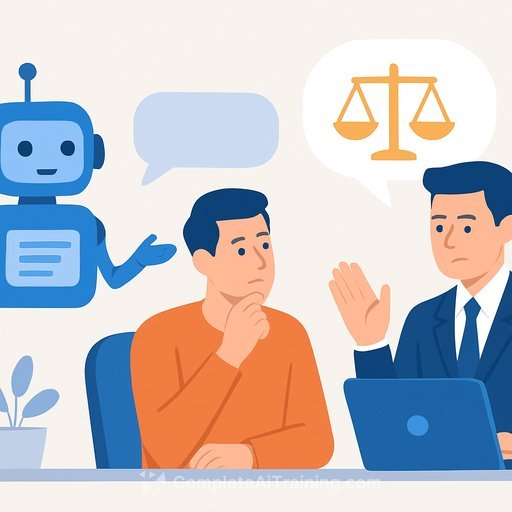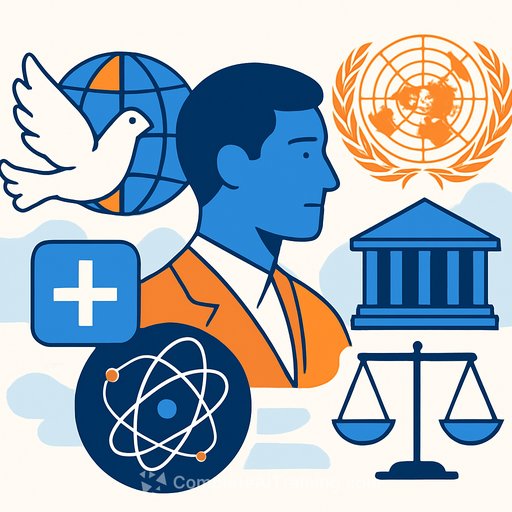The New Face of Digital Deception
Picture a courtroom swayed by a deepfake so convincing that even the experts hesitate. A witness appears to confess. A video shows an impossible act. An AI-written report ties it together. None of it real - but all of it admissible if you're not ready.
As synthetic videos, voice clones, and auto-written documents pass as authentic, the justice system is being stress-tested. The question is no longer whether AI can fake it. The question is what "proof" means when code can counterfeit reality.
The Evidence Problem Doesn't Stop at Court
This isn't isolated to trials. It's hitting journalism, politics, and corporate investigations. Photos, recordings, and signed PDFs were once the end of the argument. Now they're the beginning of doubt.
How AI Evidence Is Showing Up Today
AI-generated evidence spans video, audio, and text. Tools like Stable Diffusion and Midjourney can pump out more than a million images per day. Voice clones copy speech patterns in minutes. Even legal briefs and police reports can be drafted by chat models trained on public data.
Courts are already wrestling with it. In 2023, a U.S. District Court in California excluded a video manipulated with DeepFaceLab. In another case, synthetic audio was admitted only after an expensive forensic review. Some judges are setting standards. Many practitioners still don't have the training to spot or pressure-test synthetic media.
Why Detection Still Fails
Detection tech is improving, just not fast enough. Microsoft's Video Authenticator hovers around 65% accuracy - barely better than chance. Tools like Hive Moderation or Truepic can be fooled with slight tweaks.
Generation is outrunning verification. More lifelike eyes, lighting that matches physics, cadence-aware voices. Each step forward by generators makes detection harder. The authenticity gap widens, and in many matters it's now easier to fake something than to prove something real. For law enforcement and courts, that's an existential problem.
Legal Precedents and the Proof Problem
Under Federal Rule of Evidence 901, everything must be authenticated. But how do you authenticate what an algorithm built? Recent patterns:
- U.S. v. Smith (2022) - Deepfake video excluded for chain-of-custody issues.
- U.S. v. Johnson (2023) - Synthetic audio admitted after expert review.
- Australian v. Midjourney (2023) - Image accepted after blockchain provenance confirmation.
Many AI-based submissions miss the Daubert bar for reliability and peer review. The ABA Journal reports only about 40% of AI evidence presented in U.S. courts in 2023 met that threshold. Without clear guidelines, judges risk accepting polished fabrications or rejecting valid evidence that "looks too real."
Deepfakes and the Reputation Crisis
Public trust is fragile. A fabricated video of President Volodymyr Zelenskyy "surrendering" circulated before it was debunked. By then, damage was done - media trust reportedly dropped 25% that year, according to Reuters.
In this environment, any public figure or organization can be hit with digital defamation. A single synthetic clip can dominate search, spark investigations, and stain reputations long before the truth catches up. Response now requires AI forensics, fast corrections, and documented provenance.
Ethics and Regulation Are Catching Up - Slowly
Bias is embedded. A Stanford HAI study found 80% of training data for leading AI systems comes from Western sources. That spills into sentencing predictions, suspect identification, and forensic risk assessments. If generated outputs inherit bias, we risk codifying discrimination under a veneer of objectivity.
Regulators are moving. The EU AI Act bans deepfakes in high-risk legal contexts and sets steep fines. The C2PA standard and tools like SynthID embed provenance into media to trace origin. These help, but policy moves on a slower clock than model progress.
What the Future Likely Brings
By 2030, AI may automate roughly 30% of evidence analysis, according to Gartner. That could speed discovery and review. It also raises the risk of wrongful outcomes if synthetic content slips through.
The solution isn't banning AI from court. It's building a verifiable chain of digital custody that can survive cross-examination.
Your Playbook: Practical Steps for Legal Teams
- Require provenance: mandate content credentials (C2PA/SynthID), original device files, and hash values at intake.
- Upgrade chain of custody: log capture device IDs, software versions, model names, prompts, and edits with timestamps.
- Disclosure rules: compel parties to state when AI assisted any evidence creation, enhancement, transcription, or translation.
- Forensic first look: budget for media forensics on high-impact exhibits; pre-clear trusted experts; set SLAs for turnaround.
- Daubert-ready: document model lineage, validation data, error rates, and peer review for any AI involved.
- Motions in limine: prepare templates to exclude unauthenticated media or AI-derived conclusions lacking reliability.
- Jury instructions: explain deepfakes, known failure modes, and the weight (or lack thereof) of unverified digital media.
- Blockchain and watermarking: accept media with verifiable creation timestamps and intact content credentials when available.
- Incident response for reputational attacks: monitoring, takedown playbook, rapid expert verification, and coordinated public statements.
- Training and certification: upskill attorneys, investigators, and paralegals in AI literacy, provenance, and forensic triage.
Policy Moves Worth Considering
- Local rules requiring AI-use disclosures in evidence and filings.
- Standing orders on acceptable verification methods for video, audio, and text.
- Approved expert rosters for AI forensics and media authenticity.
- Procurement standards for law enforcement tech with audit logs and exportable evidence trails.
- Independent audits for any AI used in charging decisions or sentencing inputs.
Where Training Fits
The teams that win here don't guess - they systematize. Build your AI fluency, practice the workflows, and certify the skill.
Courses by job and popular certifications can accelerate baseline competence across your firm or agency.
The New Meaning of "Beyond a Reasonable Doubt"
Courts were built around evidence you could touch, examine, and confront. That's fading. Truth now arrives with probabilities, model artifacts, and metadata.
To keep trials fair, treat authenticity as both a technical and credibility problem. Build provenance into the process, educate fact-finders, and demand transparency from any system that touches evidence. In an era where deepfakes reset what's believable, credibility is the last line of defense - and it has to be earned, logged, and verifiable.
Your membership also unlocks:






